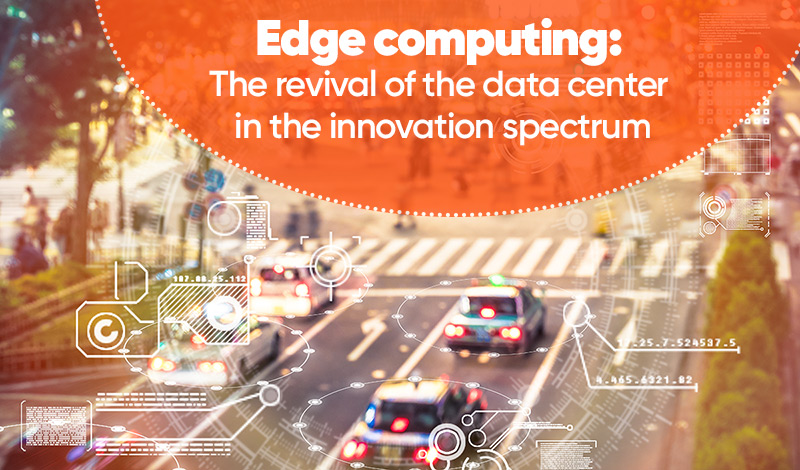The “innovation spectrum” is a term a lot of companies reference when trying to explain the ways in which tech evolves. It tells us that innovation is usually never one specific element that changes everything. Rather most innovation is driven through small incremental changes that lead to an overall industry disruption.
Innovation Spectrum Evolution
The relationship between data centers and edge computing is one such example of industries evolving on the innovation spectrum, together.
One example occurred just this year. In late February, the Commonwealth Bank of Australia announced its collaboration with Telstra and Ericsson on a trial and exploration of 5G edge computing technologies. This collaboration is expected to showcase what the bank envisions the bank branch of the future to look like.
According to Nikos Katinakis, Telstra’s Group Executive Networks & IT, “5G edge computing is all about bringing the network closer to the user or application. For financial institutions like Commonwealth Bank, it will help to enhance existing banking applications as well as deliver new use cases such as artificial intelligence, all supported by a range of software defined networking solutions.”
Internet of Things & Edge Computing
The rise of the “internet of things” (IoT) is one reason why computing is emerging from the centralized cloud and moving to the “edge” of networks and intelligent devices. Edge computing is about running and processing the data as close as possible to the end points and devices; that is, where the data is generated. For companies like banks, that’s the users, themselves.
What this implies is that even as more and more companies migrate to a multi-cloud environment, the data center is not going the way of the dodo bird. There is no great data center extinction to watch for. Rather, it’s more likely that companies will deploy a hybrid mix; with micro data centers forming crucial parts of the infrastructure. Data center aren’t actually going away. More accurately companies are evolving their infrastructure. What we think of as data centers are evolving with them.
Please take it as a “complement”
While many are quick to pronounce the death of the data center as we know it, cloud computing hasn’t exactly killed the data center. The rise of edge computing just indicates a trend of smaller data centers sprouting closer to cities of the future.
As cities start to shift initial deployments into more sophisticated deployments, edge computing will play a significant role in delivering smart cities. In the area of transportation and city planning, edge computing will play a crucial role. It will help with management in areas like bus tracking, traffic management, street lighting control, and road condition reporting. It will be a critical player in the aspects that affect movement of people in and out of cities.
The reason edge computing is being hyped now is the increased computing power residing in IoT devices. This increased power means they’re able to process data where the data is generated. This eliminates the need to run it in the cloud.
This is useful in scenarios where split-second decision-making is crucial (think autonomous vehicles). There are also the more traditional uses for edge computing. It’s already useful in arenas like factories, mines, and processing plants.
Edge computing serves as a complement to cloud computing
Edge computing serves as a complement to cloud computing, because it is also ideal in these situations:
- Lack of reliable networks or bandwidth for data transfer to the cloud
- Privacy and security as key concerns in sending data over public networks or storage of such data in the cloud
- Applications that rely on rapid calculations/insights with minimal delay
True edge computing (smaller data centers–a distributed control system of systems) brings a new dimension to how we traditionally think about data centers. These data centers bring a level of sophistication to hybrid environments but continue to drive innovation within organizations and across industries.
Of course, like any forward-looking and business-enabling enterprise, edge computing requires CIOs reconsider the increased complexity of a maintenance strategy. The criticality of optimizing budgets without being arm-twisted into buying new equipment means considering independent third-party maintenance vendors. These vendors can help you maintain that precarious balance between innovation and the IT that quietly keeps running it.
Below are some resources to help CIO’s better understand how third-party maintenance (TPM) can help optimize budgets. Also included is a guide for what questions every company should be asking a potential TPM provider:



